Two years ago I wrote about the yellow-orange aphids invading my lovely Dregea sinensis, maybe you remember them? If not, or if you are new to my blog since then, let me fill you in: the aphids are called Aphis nerii and if you are from Florida or southern Spain you have probably seen them and hated the sight of them many times. If you are from more northern parts of the world you have probably not seen them or not even heard of them.
When we put a new plant in our gardens we also invite the right kind of insects to go with it. Some plants attracts bees and beautiful butterflies, other plants less attractive things like vine weevils and if you grow lilies I am sure you are familiar with the red lily beetle. Aphids is a familiar insect to most gardeners but did you know that there are more than 4,000 species of aphids that have been described, some 250 of which are pests of crops and ornamental plants? There are more than 500 aphid species in Britain! One less common aphid is Aphis nerii, the oleander aphid, also called milkweed aphid, sweet pepper aphid, or nerium aphid.
Every late autumn I have a bit of an invasion in my garden. Small, yellow bugs that have only one thing in mind, attacking my highly precious Dregea sinensis – the wine covering my arch. If I keep up with the general spraying against aphids I can keep the numbers down, but sooner or later the war against these particular bugs gets lost - and they win. I use a combination of soil drenching and spraying with a liquid mix of herbs and fermented soy oil, an amazing product against all kind of aphids, including these ones. In fact, I never see any Aphis nerii until the autumn, but when they do turn up, it doesn’t take long before the population just explode in numbers. My lovely Dregea looks just fine on a distance, and although some of the leaves are getting yellow and dropping off, new shoots are still being produced. But get close-up to the Dregea and you are met with thousands and thousands of bright yellow-orange, quite lively insects.
The Latin name for them is Aphis nerii Boyer de Fonscolombe (now that’s a bit of a tongue twister!) Aphis nerii is a common pest of several important ornamental plants in the families Apocynaceae and Asclepiadaceae. This bright yellow aphid with black appendages is commonly found in Florida feeding on oleander, Nerium oleander, milkweeds, such as butterfly weed, Asclepias tuberosa, and scarlet milkweed, Asclepias curassavica, and wax plant, Hoya carnosa. The Aphis nerii is found in tropical to warm temperate regions throughout the world. This species probably originated in the Mediterranean region, the origin of its principal host plant, oleander. So what on earth are they doing in my garden in London??
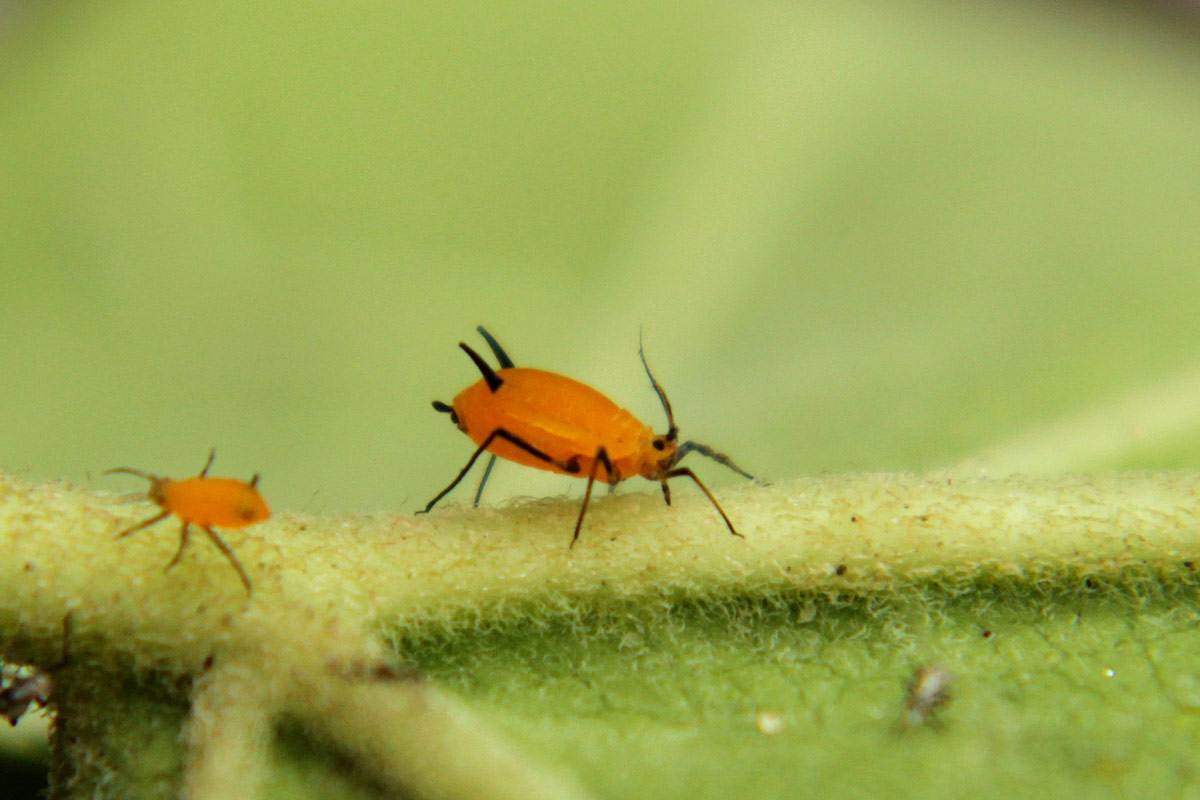 |
|
Well, going back to what I started to say - I probably invited them....by having the right plant. Dregea sinensis is a plant similar to milkweed, with sticky white sap and highly scented flowers. Aphis nerii is a bright orange-yellow insect with black legs, and stalks known as cornicles on the back of the abdomen. The aphids' bright colouring is a warning to predators. The aphids take up the cardenolides (cardiac glycosides) produced by the plants. When a predator disturbs the aphids, they exude the cardenolides in a waxy compound through the cornicles. Predators usually back away to clean the defensive compound from their mouthparts. Aphis nerii has another amazing protection called phenotypic plasticity: the ability of an organism to change its phenotype, or body form, in response to changes in the environment. They get a bit edgy whenever they feel that something is approaching them too closely. When getting close to a colony, the whole colony can in perfect harmony, ‘kick’ their tiny black legs up into the air much like a herd of miniscule ‘bucking broncos’!
When the Aphis nerii finds its preferred hosts, the population explodes. All of the aphids are females; they reproduce by parthenogenesis (clones of the mother) and they bear live young (nymphs). If conditions become too crowded on a plant or the plant declines in health, some of the aphids develop wings and will colonize new parts of the plants – or new plants if they can find any suitable.
Like other aphids the Aphis nerii secretes a viscous sugary substance known as honeydew. This secretion is greedily sought after by other insects, especially ants. Some ants live in close proximity to, and tend to aphids, although I have never seen any ants on my Dregea. As honeydew accumulates on the leaves, a black sooty mould often follows and is rather unsightly. This leaves a mix of dead aphids, honey dew and black mould. Uhg!
The Aphis nerii tend to colonise the new tender shoots of my Dregea, especially those that have twined themselves into thick clusters of stalks sticking right out from the arch. Brushing the aphids off is impossible, firstly because squashing them leads to completely orange coloured fingers which is hard to wash off. Secondly, the soft shoots are difficult to handle without breaking them, opening up a dripping tap of white sticky sap that itches with skin contact and leaving marks on clothes that doesn’t go away in the wash. Spraying and soil treatment is so far the only solution I have found, until the leaves drop off in the winter and the aphids die of starvation. Yeah!
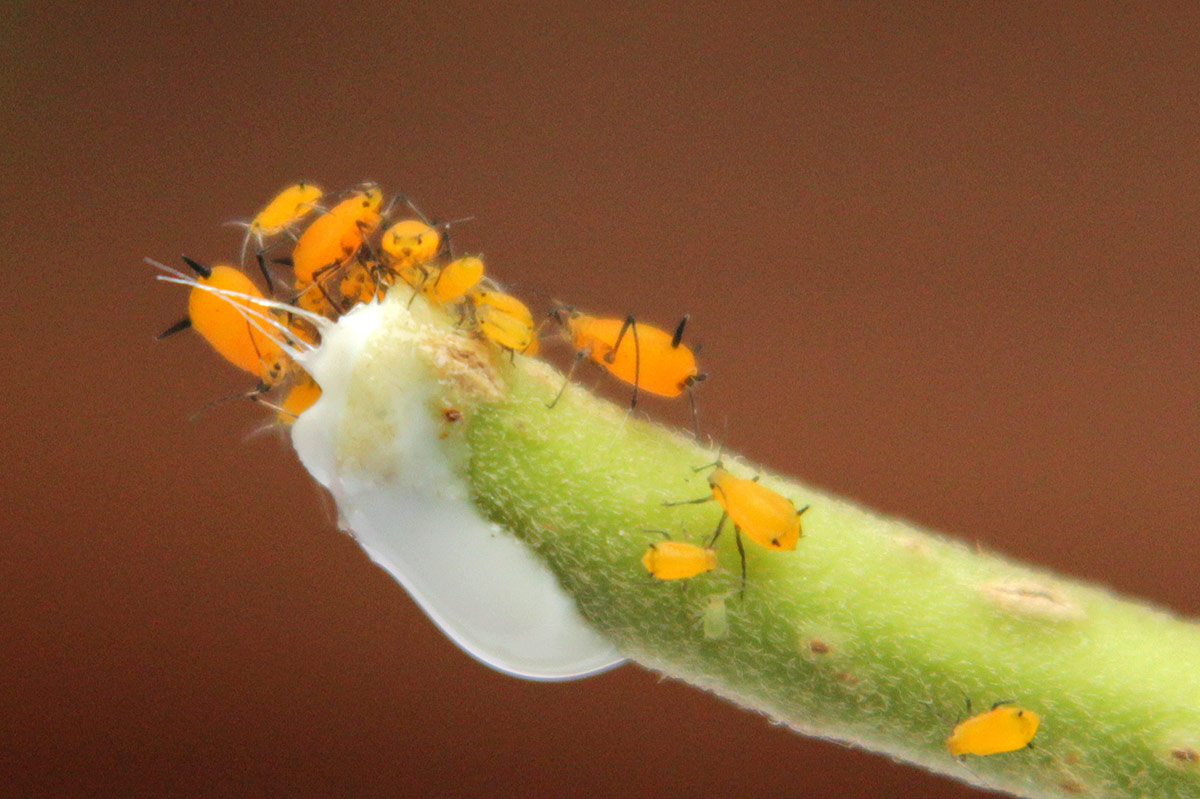 |
|
Aphis nerii can be attacked by parasitic wasps. The wasp lays its egg by inserting its ovipositor within the aphid nymph; the wasp larva then utilizes the aphid’s internal organs as its food source. After the parasite goes through metamorphosis and becomes a wasp inside the body of the aphid, it cuts a hole in the back of the aphid’s abdomen and emerges, leaving the aphid’s empty body, referred to as a “mummy”, as a hollowed-out dry shell with an open door in its back. Not sure if that’s happening in my garden, I might not have the correct wasps present, or the correct climate for the correct wasps, in any case, if the wasps are here they are not doing a particularly great job! And generalist predators that survive eating the Aphis nerii suffer the effects of the cardenolides. Ladybirds develop deformed wings and spiders weave strange disrupted webs. I saw three Harlequin ladybirds on the Dregea today when taking my photos but none of them seemed particularly interested in munching any yellow aphids. Perhaps they know what’s in for them if they try to make a meal of them!
But it is not all doom and gloom on my arch, despite all the yellow aphids. The plants are still alive and we are already in October so it won’t be more than a few weeks or so until the plant starts to drop its leaves and the sap go slower, and the aphids will lose interest. When the temperature gets low enough the aphids will all die, but a few must survive and hibernate somewhere in order to continue the cycle – exactly where and how I am not sure.
I have been contacted by an Entomologist and Invertebrate Collections Curator at the Plant Pests and Diseases Programme at The Animal and Plant Health Agency (Part of DEFRA), and have been asked to send in samples of my aphids so they can study them. Apparently very little is known and understood about Aphis nerii in UK, and how widespread it is. There is much knowledge from warmer climates, but Southern England is not the same as Florida and Southern Spain, even though we would like to think so at times! The curator found me through the blog post I wrote two years ago and we have been emailing each other, and I have also been contacted by a colleague of the curator working in Cardiff who would like me to look out for Aphis nerii mummies! I have been out looking, but I suspect it is too late in the season for any mummies left. I have however ample samples of live aphids to send off!
So the question goes out to all of you now, do any of you who live in UK have these aphids in your garden? They are very distinct so should be easy to spot, and they only go for plants with white sticky sap like milkveeds, oleanders and sometimes euphorbias. It would be great if you could have a look and report back to me. If you find any, please let me know which plant you found them on. I will report back to the curator and hopefully this will lead to better understanding of this rather exotic aphid.
To see these wacky aphids up-close and personal I have made a video of them, a little warning though, this is a very up-close video, don’t eat your lunch whilst watching it :-) As usual, my videos are best when watched full screen, (button in the bottom right corner) but remember to change to 720p or 1080p, depending on your download speed or else it will get too fuzzy.
I had great fun making this video as you can understand, the music was ‘Bug's Life’ from the movie by the same name, and if I am not slammed with a copyright issue by Disney I will hopefully be allowed by YouTube to keep it – you never know with this kind of ‘borrowed’ music :-)
Until next time, take care.
I am linking this post to
Macro Monday.
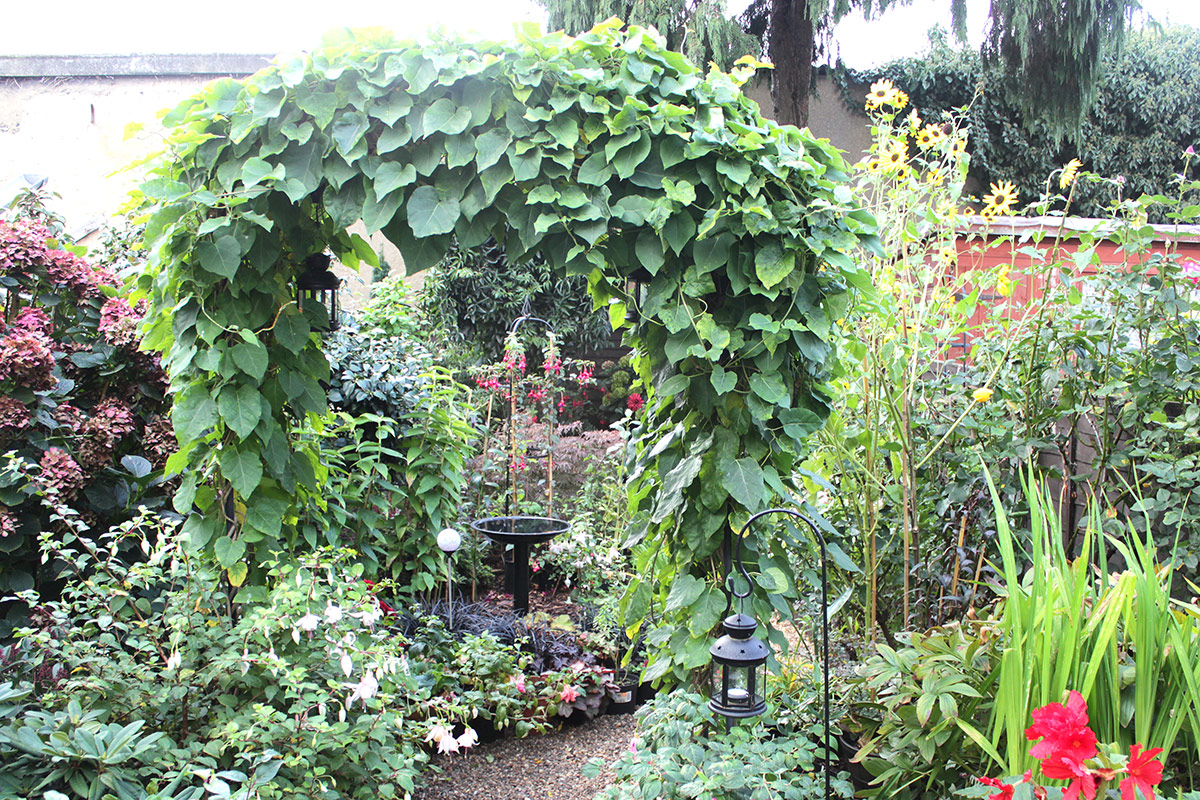
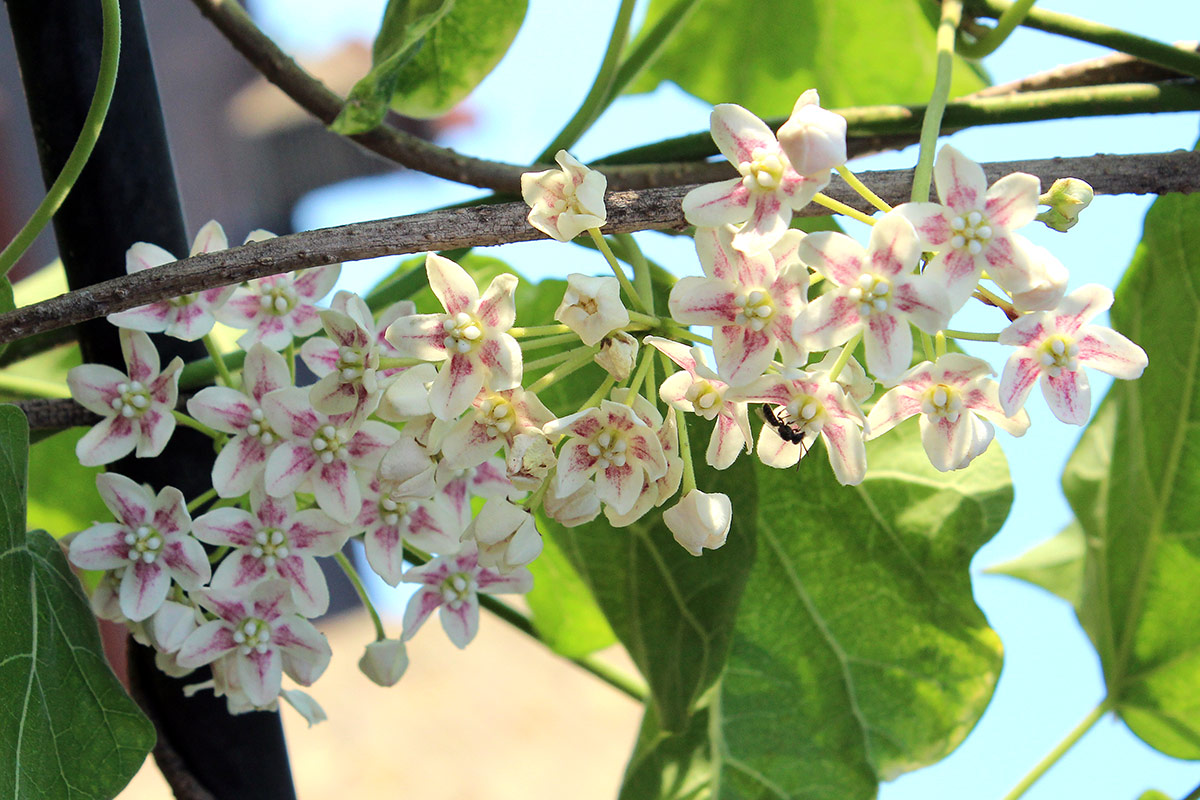
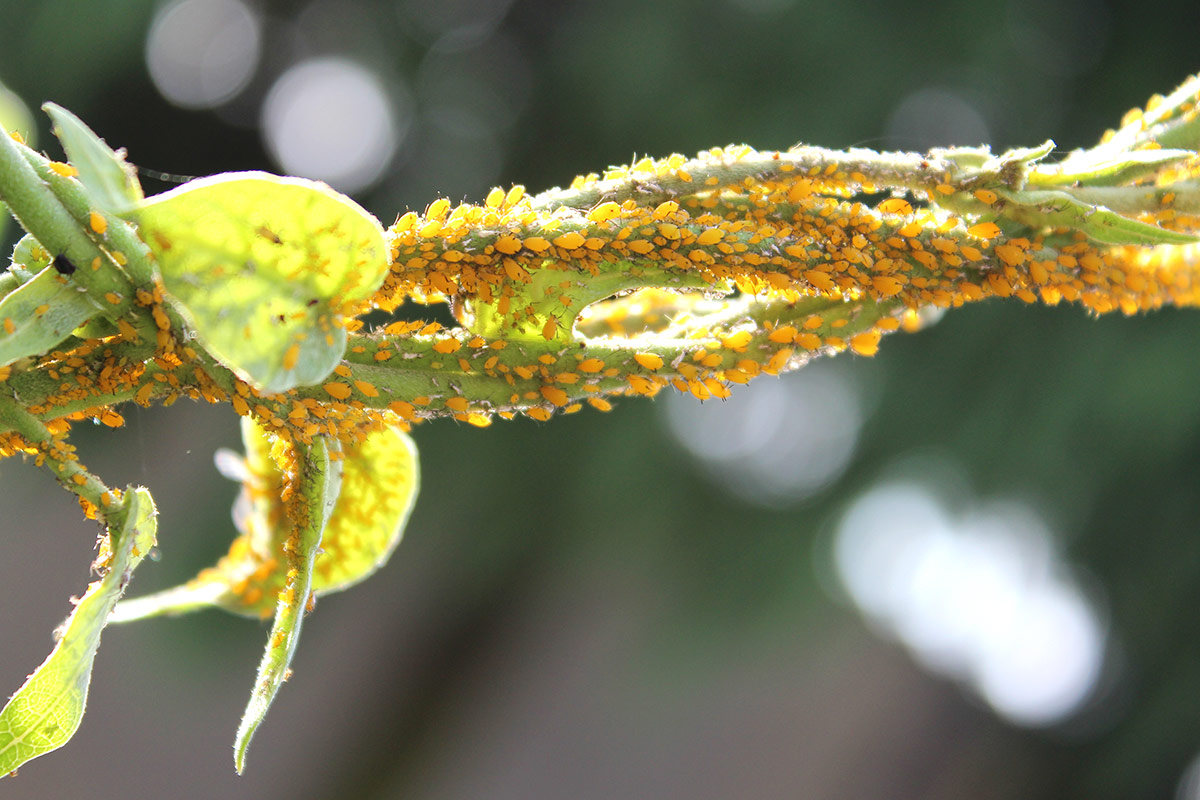

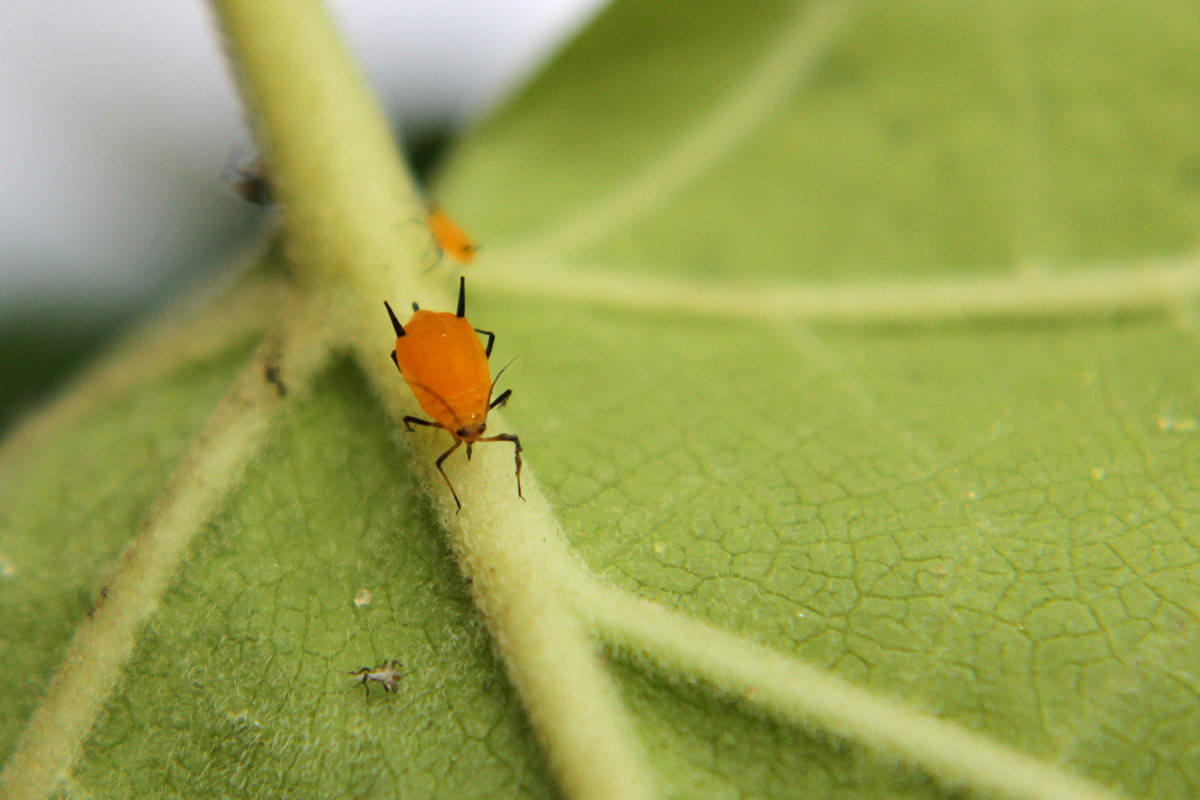
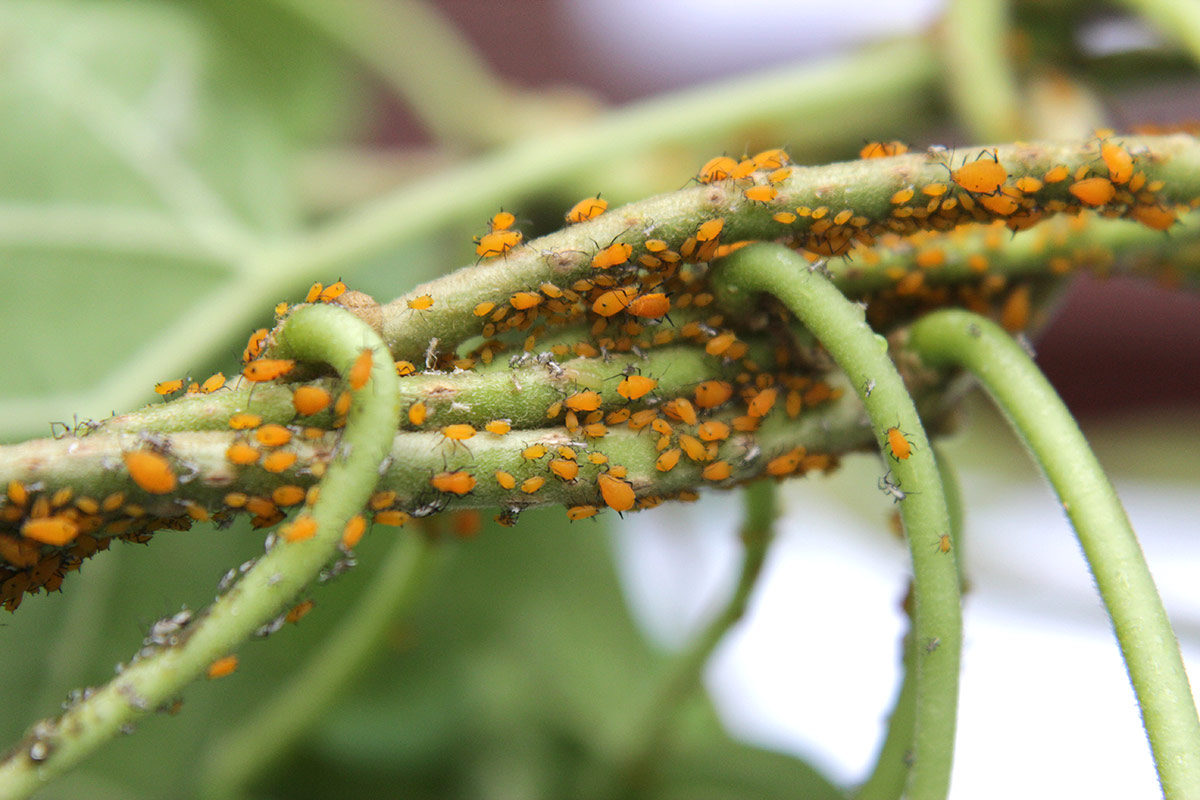

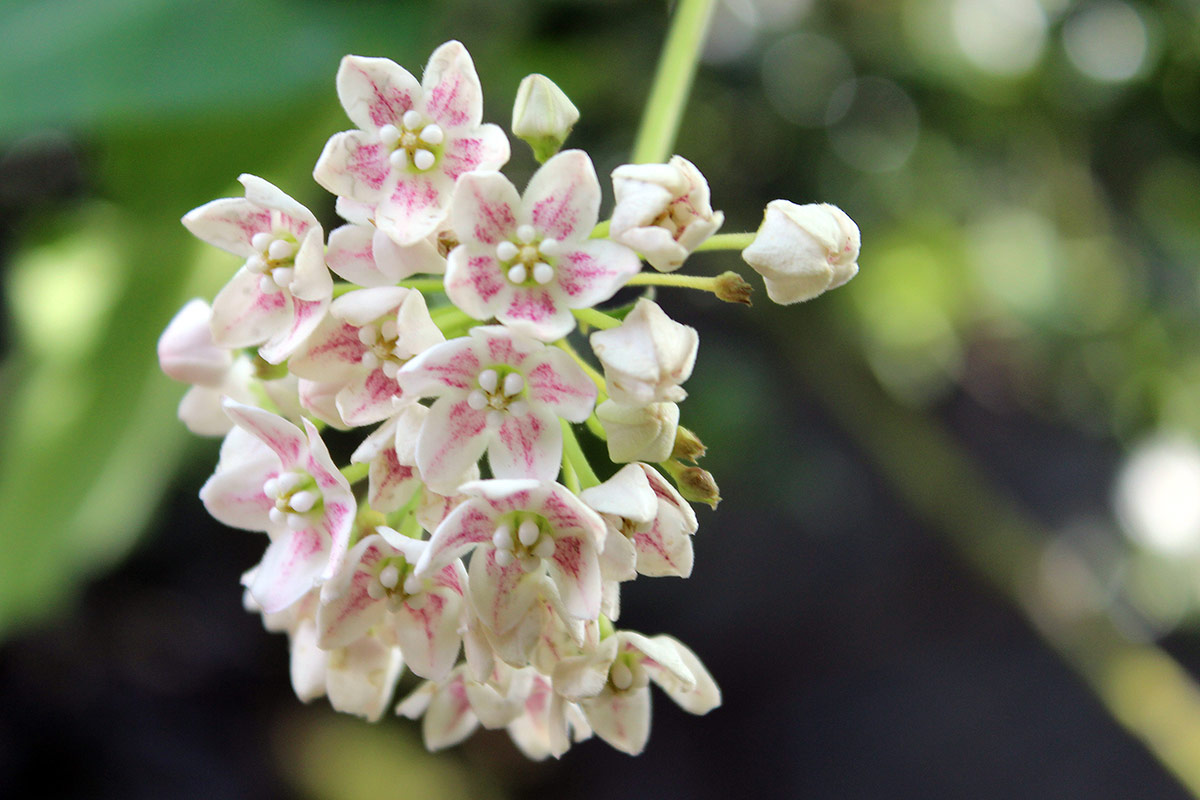

Oh, yes, they are nasty. Believe it or not, we have them here in the northern U.S., too. In fact, I had some on my Swamp Milkweed plants last summer (not this year, though). I didn't want to use insecticidal soap to get rid of them because that would kill the Monarch butterfly larva, too. So, like you, I used a stream of water to wash them away. That seemed to take care of them, and they didn't come back. But my plants were in a much smaller area than yours. They can be a problem on Milkweeds because they can destroy the plants, leaving nothing for the Monarchs.
ReplyDeleteSorry to hear you have them too, I am afraid just water won’t be enough on my infestation, I blast them with fermented soy oil, I use that on all types of aphids. It works, but only if I can get in early enough. This time they managed to sneak up on me and the population exploded before I discovered them – because it rained for about 2 weeks and I wasn’t out in the garden. I don’t have any butterflies feeding off my Dregea so I don’t have to consider that, I will have a go at getting rid of them, but I suspect it will be a lost cause.
DeleteThe curator at DEFRA is away for a week so I have booked a collection for Monday the 27th, she asked for live samples so I will have to wait to try to kill them off for another week. All in the name of science :-)
Oh, my! I loved the movie Bug's Life, and while watching your video it was hard to see them as bad guys! I mean, there were even little children aphids in there! I am glad they have not caused real harm to your gorgeous vine.
ReplyDeleteI am glad you liked the movie, I had great fun making in, and after a while the bugs didn’t seem so yucky anymore, even if they were absolutely huge on my screen :-)
DeleteThe usual aphids are bad enough but fortunately have lots of predators,l wonder whether the first lots came into your garden on the plants that you bought as it is incredible to think they just stumbled across the right plant in isolation in your garden..
ReplyDeleteI didn’t buy my Dregea sinensis, I got the two plants I have as tiny cuttings from a friend 10 years ago. I had no Aphis nerii the first 5 years so I am sure I didn’t get them with the plant, they must have come from a garden nearby, they do develop wings - someone with an oleander perhaps? Although I’ve got 2 oleanders in my garden, the only other type of plant these aphids could be interested in, I got the oleanders in spring 2013, but the Aphis nerii has not been interested in them yet – or not discovered them yet. They seem happy with munching away on my huge Dregea. But these are things the curator is asking about – how long I have seen them in my garden, and on which plants.
DeleteThey ruined my milkweed last year, but this year, nothing. I don't know how that happened as I use no pesticides because of the Monarch butterflies.
ReplyDeleteYour vine is beautiful (like the rest of your perfect garden).
Wonderful video! Disney will catch up with you eventually and cover it with advertising, but for now, cool!
I am glad you liked the video, I am unsure of how the advertising thingy works, but I think it is YouTube that places it, and in my browser I already get advertising after the first couple of minutes on this movie. Easy to get rid of though, you just cross it out. I have never had adverts before any of my movies, I find that more annoying, having to wait for a certain amount of minutes before the actual movie starts. But I suppose that’s the price to pay for ‘borrowing’ music. When someone invents more hours in the day for us I will make my own music too :-)
DeleteI am sorry to hear you are plagued by these aphids too, but I am not surprised considering where you live. I had none last year either, which was a bit surprising, but I was very rigorous with spraying with soy oil last autumn, haven’t been so good this year, not sure if my regime last year did it. Perhaps I should keep spraying every year until late autumn. I usually stop because the greenflies no longer are an issue, but I had lots of spider mites last year, which the spray also helps for so that’s why I continued last year. Oh, well, always something to learn!
I loved your video Helene and the music you've chosen goes well with images. We have no aphids like these fortunately! Nikolay said they need good frost to kill them.
ReplyDeleteI’m glad you liked the video Nadezda, I had great fun making it. Good to hear you don’t have this type of aphids, I must say they are not a huge problem to me as they turn up so late in the year, but I would of course really have liked not to have them at all. A good frost for a couple of months would certainly have done wonders, but it would have killed a lot of the plants in my garden too – I think I will just have to live with the aphids – or alternatively, get rid of the Dregea sinensis, as they only go for this type of milk-sap plants, they don’t touch any of the other plants in my garden.
DeleteUntil now I've never seen these aphids in our garden and I definitely don't want them..... but your video is really wonderful!
ReplyDeleteThanks Janneke, I hope they don’t turn up in your lovely garden either, but they would only turn up if you have the right kind of plants for them - do you have any milk-sap plants? It would be interesting to know as our climates are pretty similar.
DeleteThey are plentiful in my NY garden on my Common Milkweed. I leave them alone and they are usually taken care of by predators . Since they do not harm the plant, I leave them and they seem to only stay on the milkweed. Fascinating info, pictures and video.
ReplyDeleteThese aphids only go for milk-sap plants so that’s why they stay on your milkweed. If left long enough though, they will feed on the plants until the plants get weakened and look bad with black soot from the honeydew. I guess it depends on how big population you get and what time of year, as well as the temperature.
DeleteI am glad you liked the video and photos, I had great fun making them.
Beautiful garden!
ReplyDeleteI think I've seen those little beasts here on my butterfly weed and milkweeds. Very good macro photo.
Have a wonderful week!
Lea
If you have milkweed in your garden I guess you invited them too :-)
DeleteHave a great week!
One of the most interesting and informative posts I have ever read. I do hope your video goes viral. Fascinating example of a pathogen using the toxicity of its host to its own advantage. Your video even suggests they might be topping up where the milky sap oozes out of the cuts in the stem. Having said that, aphid feeding is so efficient when they tap the vascular pressures of the plant they do not need to.
ReplyDeleteI love those black rear appendages.
Just as well they don't seem to be feeding much on the oleander. I understand that oleander contains some very toxic poisons indeed. Would not want the crushed aphid on my hands!
Thanks for your comment on my own current aphid blog, I am going back to my comments to wax lyrical.
Thanks for your comment Roger, I had great fun making the video. And yes, the aphids will try to get to any broken stems to feed, although I do my best to not break stems on my Dregea as it bleeds for a long time and the sap is itching if I get it on my hands or face. To make this video I cut off a piece of twined stems and placed on my garden table, to get better light and for easier access. I then stayed well clear of my arch for the next 30 minutes until all the cuts had stopped dripping!
DeleteI am not sure why they have left the oleander in peace, but that might just be because the Dregea is so big and the colony still not covering the whole of it. Perhaps just a matter of time before the move to pastures new!
Super pictures and I love the video. What ghastly little pests (you're right, I've never had these in the garden) but what a fascinating contact they've opened up for you with the Animal and Plant Health agency. I'll tweet the link and hope, as Roger says, that lots more people get to see it who can help with the research.
ReplyDeleteThanks for tweeting the link Helen, I hope I will get more response from gardeners here in UK – it would be interesting to hear from anyone who has these in their garden and to see how widespread the aphids are.
DeleteFascinating post and video Helene, they are really quite a beautiful little bug and must obviously like the combination of the Dregea coupled with your micro-climate, although I am surprised that they haven't gone for the Oleanders as well. I don't think I will be seeing them on my Dregea any time soon, I have decided to protect it this winter and plant it out next Spring as you advised and see what happens, fingers crossed! on the subject of parthenogenesis I always like to watch peoples' faces when I tell them that aphids are effectively born pregnant.
ReplyDeleteI think your Dregea is safe for now, I doubt the aphids have reached your area yet, from memory you live in Cheshire right? Having said that, no one thought the red lily beetle would spread all over England when it was first detected, I heard it would be too cold for it, but I think it has by now so who knows…..this is one of the things the curator is trying to find out, how widespread the aphids are, what plants they are feeding on and what people have successfully used so far to keep the numbers down.
DeleteI will be following your Dregea next year to see how it does in the ground, I think you will find that as a mature plant it will do well in the ground and it is probably tougher than you give it credit for – it’s all about choosing the right spot :-)
Fabulous closeup views of these noxious little creatures.
ReplyDeleteThanks, and welcome to my blog!
DeleteWow, that's a lot of aphids.. I'm so sorry!
ReplyDeleteIt is a lot of aphids, but they have just arrived and will thankfully soon be gone with the cooler weather.
DeleteWow, I never seen it before in my garden. What I was supprised by is the great amount of lice in my roses not on the flowerbuds like in spring but at the back side of the leaves. I hope they soon will be gone.
ReplyDeleteHave a wonderful day Helene.
Hi Marijke, good to hear you don’t have these type of aphids in your garden, but you might not have the right kind of plants for them? I don’t have any green aphids on my roses at the moment, but I have on my hellebores, on the back of the leaves, I think they are a slightly different type of aphids – there are so many types!
DeleteSoon they will all be gone with colder weather, I hope you have a great day :-)
Oh good grief! Eugh!
ReplyDeleteHmm, yes I agree, but I find them rather interesting too – and I tolerate them much more than greenflies, as these turn up so late in the year that it’s just a matter of weeks and they are gone again.
DeleteCan I just say, thanks for making my skin crawl Helene :)
ReplyDeleteGreat video and good to read you are doing your bit for scientific research Helene.
Thankfully, we might be too cold for these creatures. I wonder, have you looked into buying those specific parasitic wasps - you probably have and that's a really stupid question, sorry.
Fascinating post Helene and well put together. I'm off to have a shower!!
You are welcome :-)
DeleteI am having a courier collection tomorrow morning with 3 vials of Aphis nerii, one with live aphids, and two with various stages of developed aphids in alcohol. I hope they had a pleasant death when I put them in :-)
The parasitic wasp thing is one issue the curator is looking into, they are not sure if it happens here in UK, and if it does, which wasp would be doing it – buying the wasps present in Spain would probably not be a good match, they would not like the climate here, besides, could turn out to become the new harlequin ladybird!
So far, no one here in UK has told me they have these aphids in their gardens, not here nor on the Plant Swap website, where I also wrote about it and asked people to report, I am not the only one having these, but according to the curator they have only had a few recorded reports so it’s early days….
What an informative post (and quite fascinating.) Happily I haven't seen these aphids where I live and hopefully never will. Good luck keeping them at bay.
ReplyDeleteI find them strangely a bot fascinating too :-)
DeleteI think you will be safe from them, unless climate change goes dramatically worse!
When I had Bufferfly Milkweed these orange ones were all over it. Now I just noticed some black ones on a small pot of chamomile. They really are a pain!
ReplyDeleteYes, these orange ones only like plants with milky, sticky sap like milkweed, the black ones can be blackfly, also a type of aphids. You can get rid of blackflies by spraying, look for organic sprays against aphids, they will work against all colours of aphids :-)
DeleteHow appropriate to Halloween to see a post with creepy orange and black insects! I read your post with interest as I have similar colored, but no doubt different variety, of aphids that appear in late summer. I have yet to find a way to control them so your own efforts were helpful to hear. Thanks for taking the time to write such a well researched post Helene!
ReplyDeleteThanks Jennifer, good to hear the post was useful to you, although as you said, I doubt it is the same type of aphids as I don’t think they would survive the Canadian climate – but you never know. These aphids are very distinct, and only live on milk sap plants, what kind of plants have you found yours on? Most aphids I know of respond to the same treatment, so use the same as you would for greenflies, and get in early if you can. If nothing works, at least it won’t be long until they all die of frost and starvation :-)
DeleteGosh, there's always something isn't there! As far as little aphids go, these ones are quite colourful, but obviously not ones you want destroying your precious plants! I've never seen any in my garden but will keep my eyes peeled.
ReplyDeleteYes, I have a bit of mixed fascination with these ones, glad to see the back of them soon, for this year! You can be sure to get them sooner or later in your garden, if you have the right plants for them, these aphids have been recorded several places around London now so it’s just a matter of time.
DeleteThanks for your informative post, Helene. I have these annoying bugs on a Hoya I have growing on my side patio. I hose them off regularly only to have them reappear within days. I'm about to step up my game with some insecticidal soap. Last week, I almost brought home another Hoya from a local plant sale but I was afraid I'd perpetuate the current problem so I abandoned the idea. You've provided me much more information here than the expert the botanic garden's plant folks had on hand. Thanks again.
ReplyDeleteGlad to be of help :-)
DeleteI have found the fermented soy oil to be the most effective, but I doubt you can get it where you live. It is taken up by the roots and emit a smell the aphids don’t like so they stay away – for up to 4 weeks. Amazing really. Doesn’t harm the plant, and bees and butterflies still visits the flowers with no harm, and humans can’t detect the smell so the flowers still smell as beautiful as ever. Perfect for the lazy gardener that can’t be bothered with spraying several times a week. If you can find a product similar to this, do try it. But you have to keep using it, this year I stopped in August when we had cooler weather, and payback for that is aphids starting in October.